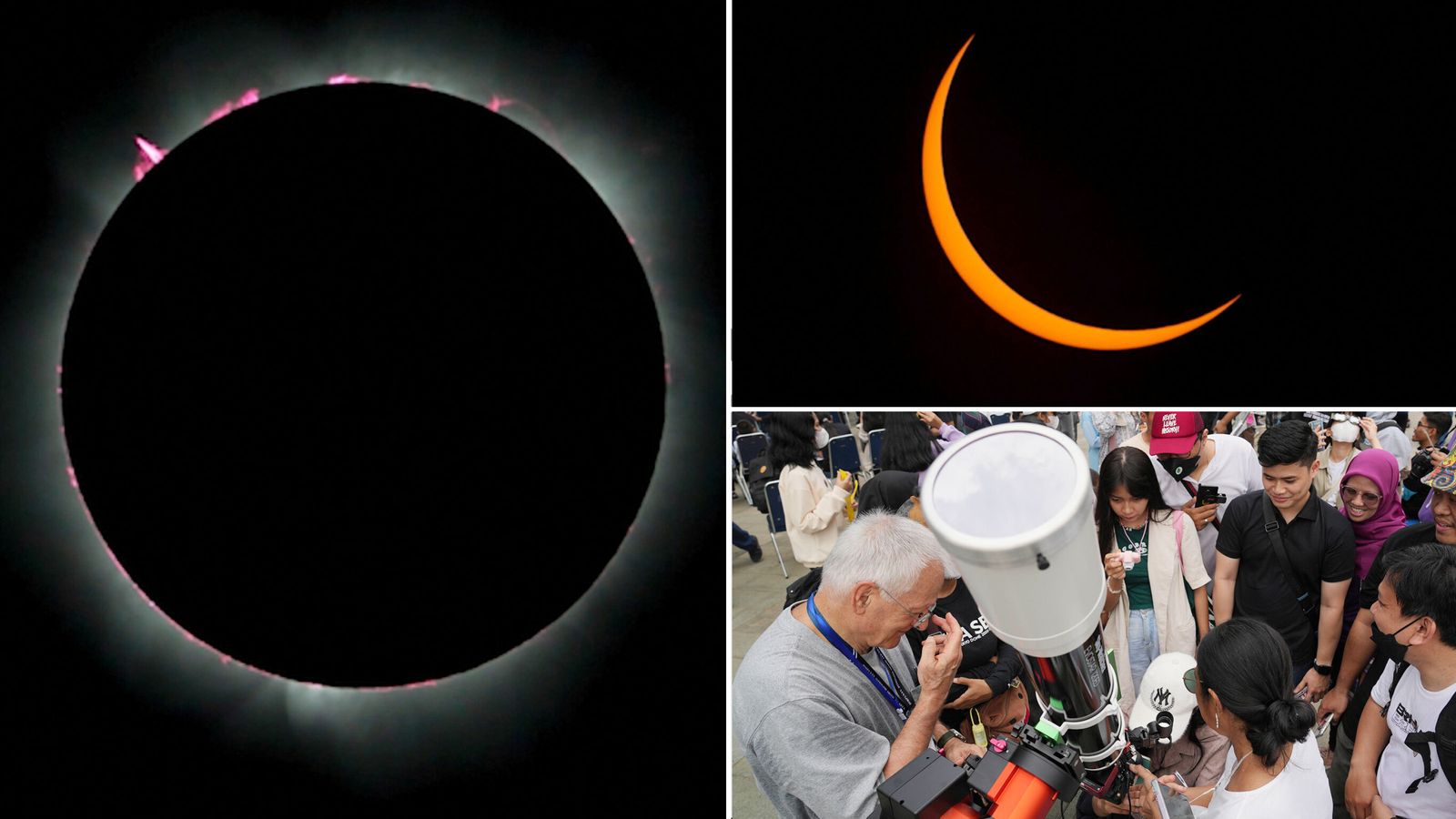Thousands of stargazers gathered in a remote Australian town to witness a “spectacular” rare solar eclipse.
About 20,000 people descended on Exmouth, which has a population of just 3,000, after the town was promoted as one of the best vantage in the country to see the celestial event.
The eclipse plunged parts of Australia’s northwest coast into darkness around midday local time on Thursday, with the temperature suddenly dropping 5C (9F) as the moon’s shadow enveloped the region.
Crowds arrived days in advance to secure the best viewing spots, camping on a red, dusty plain on the edge of the town with cameras and viewing equipment pointing skywards.
NASA astronomer, Henry Throop, who was among those assembled in Exmouth, hailed the eclipse as “mind-blowing”.
“It was so sharp and so bright, you could see the corona (the outermost layer of the sun’s atmosphere) around the sun there,” he said.
“It’s only a minute long, but it felt like a really long time. There’s nothing else you can see which looks like that. It was just awesome. Spectacular.”
Rare ‘beaver blood moon’ marks last total lunar eclipse for three years
In pictures: Partial solar eclipse as it happened
Watch live as UK experiences partial solar eclipse
Mr Throop, from Washington, said Jupiter and Mercury were also visible, adding: “Even seeing Mercury at all is pretty rare. So that was just awesome.”
Meanwhile another stargazer, Julie Copson, travelled more than 600 miles (1,000km) from the west coast port city of Freemantle to witness the phenomenon.
“I felt so emotional, like I could cry,” she said.
‘Crazy phenomenon’
The eclipse was a “hybrid” not seen since 2013. This means, depending where viewers stand, the moon covers the sun in a total eclipse or obscures the centre leaving a “ring of fire” in an annular eclipse.
Hundreds watched the eclipse, partially obscured by clouds, at the Jakarta Planetarium in Indonesia’s capital.
The call to prayer echoed from the city’s mosques when the eclipse phase began – with Muslims saying eclipse prayers as a reminder of God’s greatness.
The eclipse, tracked from the Indian Ocean to the Pacific Ocean, was also visible from East Timor, located east of Australia and Indonesia.
They happen when the earth is in the “sweet spot” so the moon and sun appear to be almost exactly the same size in the sky, NASA solar expert Michael Kirk said.
“It’s a crazy phenomenon,” Mr Kirk said. “You’re actually watching the moon get larger in the sky.”
Millions of people will get the chance to view an annular eclipse on 23 October this year, when it crosses North, Central and South America.
Read more:
The moon could get its own time zone – but clocks work differently there
Asteroid passes between Earth and moon in 17,500mph close encounter
Astronauts will be ‘living and working on the moon within a decade’
NASA said it will begin in the US, travelling from the coast of Oregon to the Texas Gulf Coast and weather permitting, will be visible in Oregon, Nevada, Utah, New Mexico and Texas, as well as parts of California, Idaho, Colorado and Arizona.
It will continue to Central America, passing over Mexico, Belize, Honduras and Panama. In South America, the eclipse will travel through Colombia before ending off the coast of Natal, Brazil, in the Atlantic Ocean.






